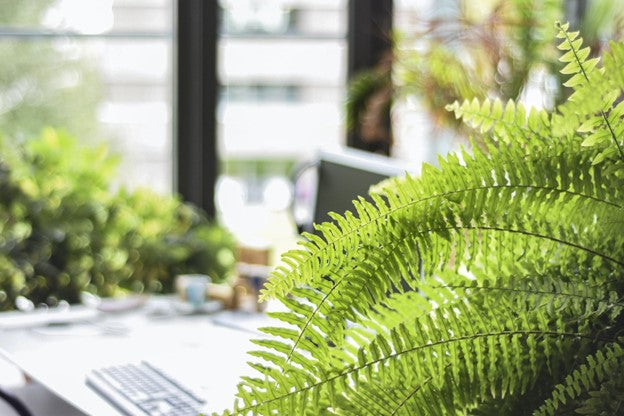
From Succulents to Ferns: Choosing the Right Indoor Plants for Your Lifestyle
Indoor plants have become increasingly popular as people recognize the numerous benefits they provide. They don’t just enhance the aesthetic appeal of your living space, but they also contribute to your well-being. Plants are effective in purifying the air, reducing stress, and promoting a sense of relaxation. Indoor plants offer a way to bring a touch of nature into your home, making it feel more vibrant and welcoming.
Among the vast array of indoor plants available, ferns and succulents are two categories that stand out for their unique qualities and suitability for indoor gardening. Ferns are non-flowering plants with delicate, feathery fronds, while succulents are characterized by their thick, fleshy leaves that store water. Both types of plants boast a wide variety of species, each with its own distinct appearance and care requirements.
If you want a garden-inspired home or you simply want a touch of green to enliven a boring space, read on and we’ll share some plants to consider.
Jade Plant for Good Luck
They are easily recognizable by their thick, woody stems and oval, glossy leaves. They can grow into small trees and are considered symbols of good luck in some cultures.
Jade plants prefer bright light, but they can also tolerate lower light conditions. Allow the soil to dry out between waterings, and be cautious not to overwater, as this can cause root rot. Prune as needed to maintain the desired shape.

Mother of Thousands to Add Interest
Also known as the "Mexican Hat Plant," it is an intriguing option if you’re looking for unique succulents. The plant produces tiny plantlets along the edges of its fleshy, elongated leaves. These plantlets can easily fall off and grow into new plants, giving this succulent its name.
Place Mother of Thousands in a bright spot with indirect sunlight. Water sparingly, allowing the soil to dry out between waterings. Keep in mind that this plant can be invasive, so it's best to remove and share or discard excess plantlets.
Aloe Vera for Healing
Aloe vera is a popular succulent known for its healing properties. Its long, pointed leaves contain a gel that can be used to soothe skin irritations and burns. Aloe vera plants have a compact, rosette shape and can grow up to 24 inches in height.
It requires well-draining soil and a pot with drainage holes. Place the plant in a bright spot with indirect sunlight, as the direct sun can scorch the leaves. When watering succulents like aloe vera, make sure to do so sparingly. There should be enough time for the soil to dry out between waterings.
Zebra Plant for Golden Blooms
It is a rosette-forming succulent with dark green leaves adorned with white, horizontal stripes.
Zebra plants thrive in bright, indirect light. Water them sparingly, allowing the soil to dry out before you water it again. They are relatively low-maintenance and can tolerate a variety of indoor conditions. With proper care, you’ll eventually be rewarded with beautiful yellow flowers from this plant.

Photo by Unknown Wong from Unsplash
Boston Fern Brings a Tropical Forest Feel
Their graceful, arching fronds and lush, full appearance make Boston ferns beautiful. They can grow quite large, making them an excellent choice for hanging baskets or as a statement piece on a plant stand.
Boston ferns prefer bright, indirect light and consistent moisture. Keep the soil evenly moist but not soggy, and maintain high humidity by misting the plant or placing it on a tray with pebbles and water. Prune any dead or yellowing fronds to encourage new growth.
Maidenhair Fern to Add Elegance
These are delicate plants with fine, feathery fronds and a lacy appearance. They come in various species, each with a unique frond shape and growth habit.
Maidenhair ferns need bright, indirect light and consistently moist soil. High humidity is crucial for these ferns, so mist them regularly or use a pebble tray. They can be a bit finicky, so monitor the plant closely and adjust its environment as needed.

Staghorn Fern as a Statement Piece
They are epiphytic plants with unusual, antler-like fronds that can grow quite large. They are often mounted on wooden boards or hung in baskets, making them an interesting and unique addition to your indoor garden.
Staghorn ferns prefer bright, indirect light and should be watered when the mounting medium (such as sphagnum moss) feels dry. Mist the plant regularly to maintain humidity, and provide additional nutrients through foliar feeding or by placing a small amount of compost or slow-release fertilizer behind the shield fronds.
Button Fern for Evergreen Growth
These are compact plants with small, round, dark green leaves that grow along wiry, arching stems. They have a trailing growth habit, making them ideal for hanging baskets or containers on shelves.
Button ferns thrive in bright, indirect light but can tolerate lower light levels. Allow the soil to dry out slightly between waterings, and maintain moderate humidity. Prune any dead or damaged fronds as needed to maintain a tidy appearance.
Conclusion
Succulents and ferns are some of the best indoor plants. Depending on what you choose, most of them have minimal care and maintenance requirements. Hence, they’re easy to grow, even for beginners. Keep an eye on the plants mentioned above.
 Lottie Mead spent six years working in the real estate industry before taking time out to start a family. She has since returned to her first love of writing and enjoys contributing to a range of print and online publications on a wide assortment of topics.
Lottie Mead spent six years working in the real estate industry before taking time out to start a family. She has since returned to her first love of writing and enjoys contributing to a range of print and online publications on a wide assortment of topics.
